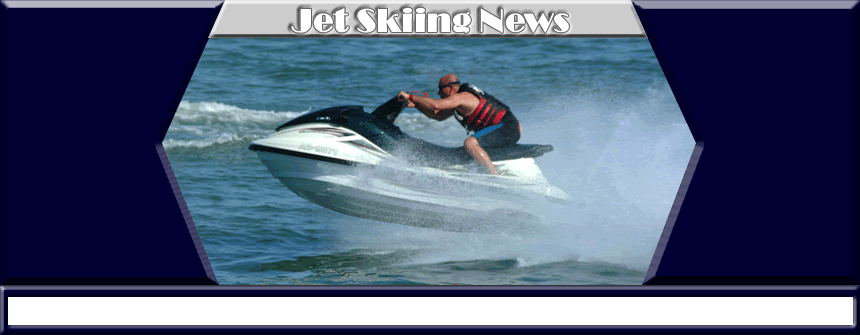Jet-Ski is the brand name of personal watercraft (PWC) manufactured by Kawasaki Heavy Industries, Lt. The name, however, has become a genericized trademark for any type of personal watercraft. Jet ski (or jetski) can also specifically refer to versions of PWCs with pivoting handlepoles known as "stand-ups".
Jet ski became foremost the colloquial term for stand-ups because, in 1973, Kawasaki was responsible for a limited production of stand-up models as designed by the recognized inventor of jet skis, Clayton Jacobsen II. In 1976, Kawasaki then began mass production of the JS400-A. JS400s came with 400cc two-stroke engines and hulls based upon the previous limited release models. It became the harbinger of the success Jet-Skis would see in the market up through the 1990's.
In 1986 Kawasaki broadened the world of Jet Skis by introducing a two person model with lean-in "sport" style handling and a 650cc engine, dubbed the X-2. Then in 1989, they introduced their first two passenger "sit-down" model, the Tandem Sport (TS) with a step-through seating area.
In 2003, Kawasaki celebrated the Jet Ski brand by releasing a special 30th anniversary edition of its current stand-up model, the SX-R, which has seen a revival of interest in stand-up jetskiing. The X-2 has also been updated, based on the SX-R platform and re-released in Japan. Kawasaki continues to produce three models of sit-downs, including two four-stroke models.
A personal water craft ( PWC) or sea scooter, is a recreational watercraft that the rider sits or stands on, rather than inside of, as in a boat. Models have an inboard engine driving a pump jet that has a screw-shaped impeller to create thrust for propulsion and steering. They are often referred by the names WaveRunner , Jet Ski , or Sea-Doo , which are brand names owned by Yamaha, Kawasaki, and Bombardier, respectively.
A personal watercraft is also known as a jet ski, waverunner or pwc and is an inboard vessel, that uses an engine to power a water jet drive as its primary source of propulsion. It has no open carrying area that could retain water and is operated with a person or persons positioned on, rather than within the hull. Some manufacturers of pwc's are SeaDoo, Polaris, Honda and Yamaha. When riding a pwc always wear a life vest or some other flotation device and always exercise caution.
Because of their relatively low cost and the freedom they afford to owners, PWC are widely used for recreation. However, many U.S. states require safety training for personal watercraft operators. Modern PWC include a lanyard attached to a dead man's switch, to turn off the vessel if the operator falls off -- provided the lanyard is attached to the operator.
Most are designed for two or three people, though four-passenger models exist. Stand-up PWCs were first to see mass production and are still popular for single riders. The invention of both major types of PWC is usually credited to Clayton Jacobsen II of Arizona, originally a motocross enthusiast.
Lake Havasu, Arizona, is a favorite for PWC riders and racers alike, and hosts the IJSBA World Finals for personal watercraft racing each October since 1982.
Some surfers use PWCs to get to the waves and get up to speed with them; this is known as tow-in surfing or tow surfing. They can also be used for towing water skiiers on flat water.
Although most PWCs are purchased by individuals for recreational use, they are also used for more serious purposes. PWCs are small, fast, easily handled, fairly easy to use, affordable and their propulsion systems, which do not have external propellers, are safer for swimmers and wildlife. For these reasons, they are sometimes used in preference to small motorboats.
